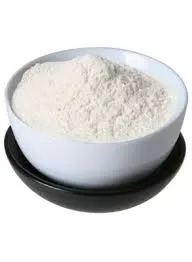
Nov . 12, 2024 05:50 Back to list
how to dissolve hydroxyethyl cellulose
How to Dissolve Hydroxyethyl Cellulose
Hydroxyethyl cellulose (HEC) is a versatile, water-soluble polymer derived from cellulose, widely used in various industries, including pharmaceuticals, cosmetics, and food production. Its properties, such as thickening, stabilizing, and film-forming abilities, make HEC an essential ingredient in many formulations. However, properly dissolving HEC can be a challenge due to its high viscosity and potential for lump formation. In this article, we will discuss effective methods for dissolving hydroxyethyl cellulose to achieve a smooth and uniform solution.
Understanding Hydroxyethyl Cellulose
HEC is a non-ionic cellulose ether that is soluble in cold and hot water, forming a clear and viscous gel-like solution. The degree of viscosity can be manipulated by adjusting the concentration of HEC in the solution. When working with HEC, it’s crucial to understand its properties to ensure proper handling and dissolution techniques.
Steps to Dissolve Hydroxyethyl Cellulose
1. Choose the Right Concentration Before starting the dissolution process, determine the desired concentration of HEC for your application. Common concentrations range from 0.1% to 5%, depending on the intended use. Ensure you have accurate measurements to maintain consistency in your formulations.
2. Use the Correct Temperature HEC can dissolve in both cold and hot water. However, using warm or hot water (around 60°C or 140°F) can expedite the dissolution process. If using cold water, expect a longer dissolution time. Always ensure the water is not boiling, as excessive heat can adversely affect the properties of HEC.
3. Pre-Mixing To prevent clumping, it is advisable to pre-mix HEC with a small amount of an inert filler such as sugar, salt, or a similar substance before adding it to the water. This method helps in dispersing the particles evenly.
how to dissolve hydroxyethyl cellulose

4. Gradual Addition Slowly sprinkle HEC into the water while stirring continuously. This technique prevents clumping and ensures that the polymer disperses uniformly. Using a whisk, blender, or mechanical stirrer can significantly aid in achieving a smooth mixture.
5. Mixing Techniques For small-scale applications, using a manual whisk or spatula may suffice. However, for larger batches, a high-shear mixer can provide the necessary force to ensure complete dissolution. Continue mixing for at least 10 to 15 minutes until the solution reaches the desired viscosity.
6. Hydration Time After mixing, allow the solution to sit for a few minutes to facilitate complete hydration of the polymer. During this time, continue to mix gently to avoid settling.
7. Adjust Viscosity If the solution is too thick, you can adjust the viscosity by adding more water. Conversely, if you find the concentration too low, gradually sprinkle in more HEC while stirring.
8. Final Mixing Once the desired viscosity is achieved, ensure thorough mixing to eliminate any remaining lumps. This step is essential for applications where a smooth texture is critical, such as in cosmetics or food products.
Conclusion
Dissolving hydroxyethyl cellulose requires careful attention to detail and methodical steps to achieve a smooth, uniform solution. By choosing the right concentration, temperature, and mixing technique, users can effectively harness the properties of HEC for their specific applications. With practice and patience, the challenges of working with this versatile polymer can be easily overcome, resulting in high-quality formulations for a variety of industries. Whether you are a formulator in the cosmetics industry or working on a food product, mastering HEC dissolution is key to your success.
-
Versatile Hpmc Uses in Different Industries
NewsJun.19,2025
-
Redispersible Powder's Role in Enhancing Durability of Construction Products
NewsJun.19,2025
-
Hydroxyethyl Cellulose Applications Driving Green Industrial Processes
NewsJun.19,2025
-
Exploring Different Redispersible Polymer Powder
NewsJun.19,2025
-
Choosing the Right Mortar Bonding Agent
NewsJun.19,2025
-
Applications and Significance of China Hpmc in Modern Industries
NewsJun.19,2025







